Topic: Oddities
| The Tin Man of Santa Monica |
This character on the Santa Monica Third Street Promenade doesn't speak, he just whistles.
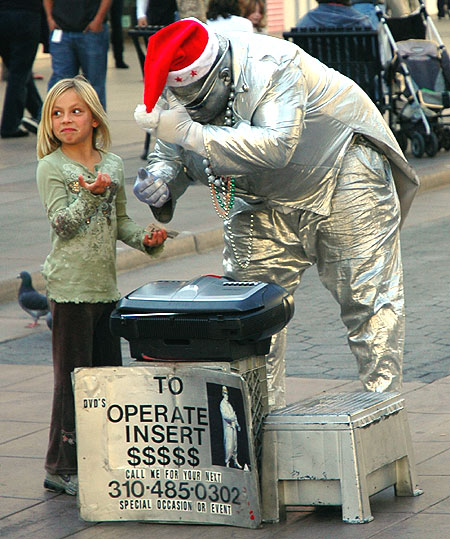
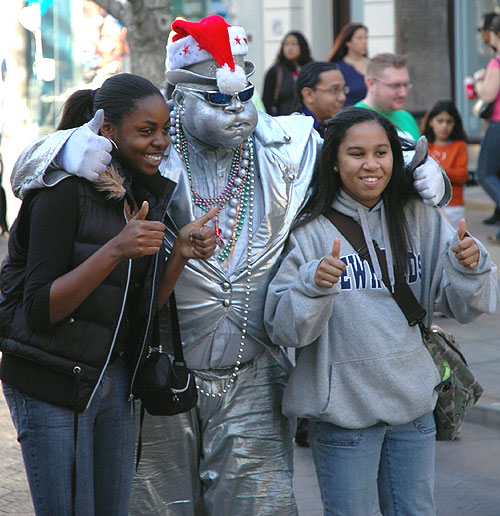
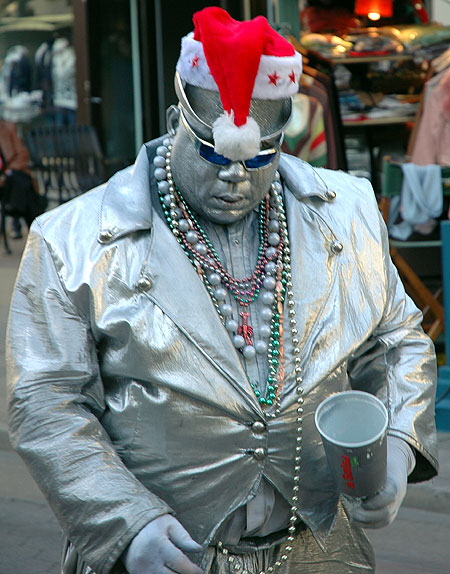
| « | July 2025 | » | ||||
| S | M | T | W | T | F | S |
| 1 | 2 | 3 | 4 | 5 | ||
| 6 | 7 | 8 | 9 | 10 | 11 | 12 |
| 13 | 14 | 15 | 16 | 17 | 18 | 19 |
| 20 | 21 | 22 | 23 | 24 | 25 | 26 |
| 27 | 28 | 29 | 30 | 31 | ||

| The Tin Man of Santa Monica |



| Santa as Voyeur |
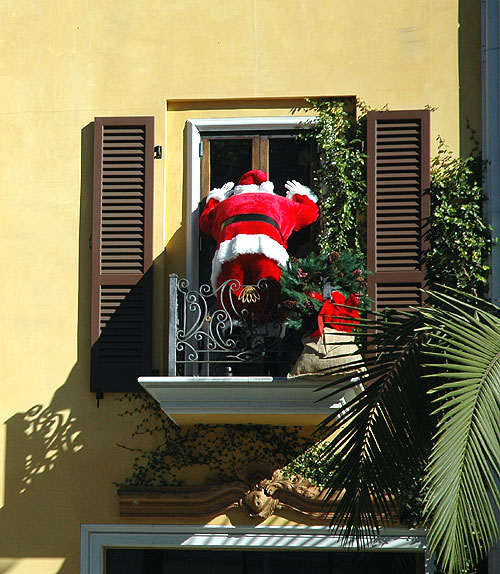
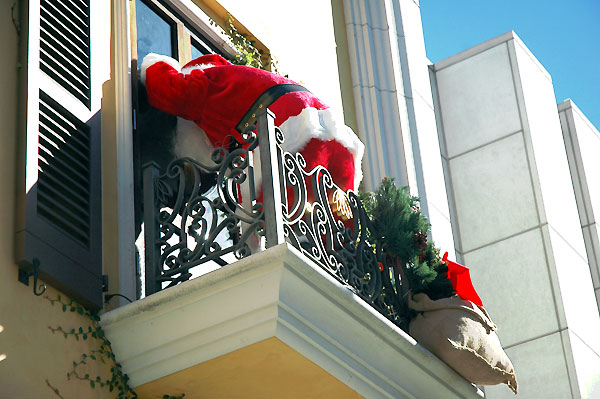
Bijan, at 420 Rodeo Drive, is the single most expensive store in the world. You must make an appointment in advance to shop at Bijan (which was named after its Iranian owner). On a typical visit, Bijan's average customer spends about a hundred grand on men's fashions, which range from fifty dollar pairs of socks to the fifteen thousand dollars suits.
Suzy Menkes in the International Herald Tribune on 27 November says Rodeo Drive is so last decade. The important center of fashion is now Melrose Place - "The intimacy of Melrose Place compares to the bustling, youth-oriented Robertson Boulevard, a five-minute drive away, and the glossy plate glass and palm trees of Rodeo Drive (which has chandeliers as its Christmas lights)." She quotes Bill Blass when he found an old house on Melrose Place he could buy - "I had my eyes on Melrose Place for four years and then this house came up. I think it is very chic and I am in love with this space. It is going to be the most important street in fashion. Rodeo Drive is for tourists." Blass' place opened last month. Note that Melrose Place is just around the corner from Trashy Lingerie.
This is an odd town.
| Mixed Messages |
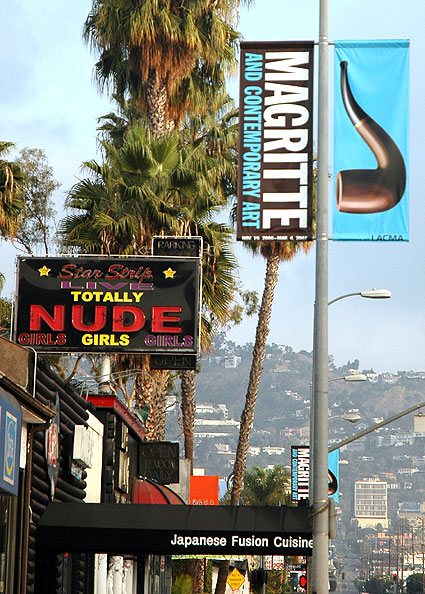
| Nightmare Fish |
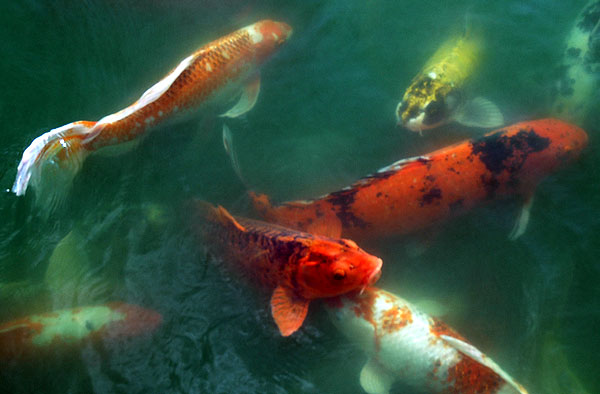
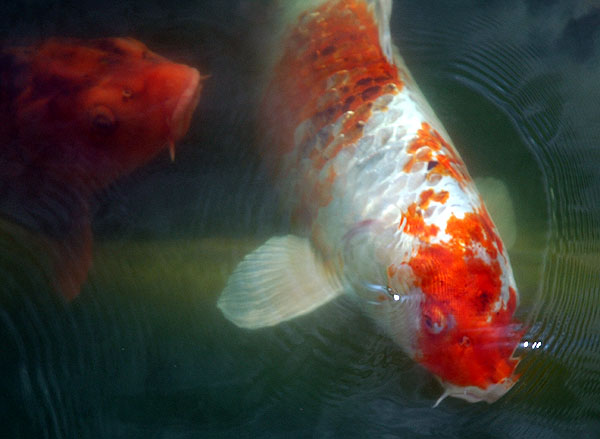
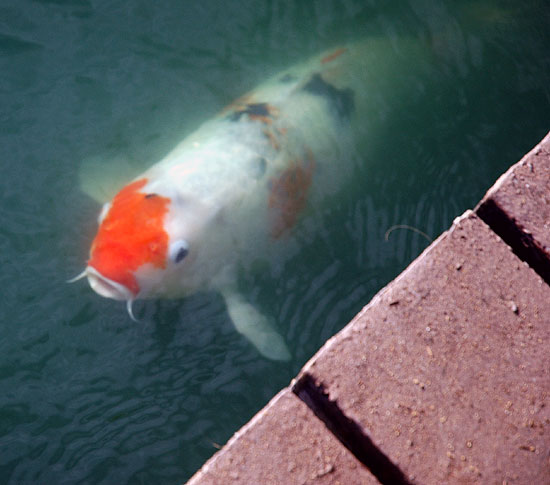
Note:
Koi are ornamental domesticated varieties of the common carp, Cyprinus carpio, that originated from China and widely spread in Japan. They are very closely related to goldfish, and in fact the style of breeding and ornamentation has become very similar, probably through the efforts of Japanese breeders to emulate goldfish, but they are not goldfish. Koi and tattoos of Koi are traditionally considered lucky. The word "koi" comes from Japanese. The original Japanese word koi simply means "carp," including both the dull grey fish and the brightly colored varieties. Nishikigoi is a more specific term for the ornamental carp. While a Chinese book of the Western Jin Dynasty (4th century) mentions carp with various colors, Koi breeding become popular in the 19th century in the Niigata prefecture of Japan. Farmers working the rice fields would notice that some carp would be more brightly colored than others, capture them, and raise them (when normally the brighter colors would doom the fish to be more likely eaten by birds and other predators). By the twentieth century, a number of color patterns had been established, most notably the red-and-white Kohaku. The outside world did not become aware of the degree of development until 1914, when the Niigata Koi were exhibited in the annual exposition in Tokyo. Some of them were also presented to Crown Prince Hirohito. At that point, interest in Koi exploded throughout Japan. The Hobby of keeping Koi spread worldwide after plastic bags and shipping of Koi became both fast and safe for the fish. These factors enabled Koi to be shipped worldwide with low mortality rates. Koi are now commonly sold in most pet stores, with higher-quality fish available from specialist dealers. Koi varieties are distinguished by coloration, patterning, and scalation. Ghost Koi, developed in the 1980s are metallic hybrids of wild carp and Ogon Koi and are not considered true Nishikigoi. Butterfly Koi, Longfin Koi, or Dragon Carp were also developed in the 1980s and are notable for their long and flowing fins. They are actually hybrids with Asian carp, and, like Ghost Koi, are not considered true Nishikigoi. The major named varieties include:
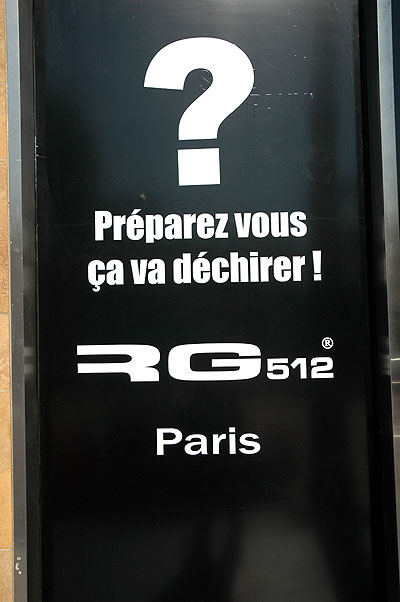 The French have this thing with Hollywood. It's not for no reason the most popular chewing gum over there is "Hollywood." At this site you can get back issues of the trash pin-up magazine Paris Hollywood (Beauté de Paris Hollywood and Les Folies de Paris et Hollywood). That was published bi-monthly over there from 1947 through 1973. Here's a cover from 1950. The book on that is Paris-Hollywood: Serge Jacques. At this site you can buy French posters for American Movies, like this one (of course). There used to be a junk jewelry store on Rue des Rennes call Sunset Boulevard - perhaps it's still there. The place that sells "California clothes" in the little square on Boulevard St-Germain across from the centuries-old church where Descartes is buried may be gone. But casually mentioning you're visiting from Hollywood works wonders in Paris.
The French have this thing with Hollywood. It's not for no reason the most popular chewing gum over there is "Hollywood." At this site you can get back issues of the trash pin-up magazine Paris Hollywood (Beauté de Paris Hollywood and Les Folies de Paris et Hollywood). That was published bi-monthly over there from 1947 through 1973. Here's a cover from 1950. The book on that is Paris-Hollywood: Serge Jacques. At this site you can buy French posters for American Movies, like this one (of course). There used to be a junk jewelry store on Rue des Rennes call Sunset Boulevard - perhaps it's still there. The place that sells "California clothes" in the little square on Boulevard St-Germain across from the centuries-old church where Descartes is buried may be gone. But casually mentioning you're visiting from Hollywood works wonders in Paris.
Newer | Latest | Older